- Home >
- Our Actions >
- Ambassador report
3
Comments
WATER AND WETLAND |
|---|
|
by Hajira Usman | 21-03-2018 02:36
|
|
Wetland is a type of land-form marked by the presence of water influencing the biological, physical and chemical properties of that area. The types of wetlands are distinguished based on factors like type of soil, location, water properties and the growth of plant species in the area. Examples include, marshas, swamps, ponds, lagoons, mudflats, floodplains and lakes. The detection of wetlands is done by surface measurement and satellite data to map the extent of surface water. These techniques allow to monitor the seasonal changes in freshwater and the state of wetlands and plot the direction of seasonal flooding. Wetlands play a significant role in the sustainability and durability of the environment. Wetlands act as a form of erosion control due to the growth of deep-rooted plants that lower the water pressure. The ecosystems in areas surrounding wetlands are stabilized and enriched with the help of nutrients going into lakes and streams. They are a habitat for a number of species of fish, birds like ducks, gulls and kingfishers, mammals including otters and beavers, offering them food, safety and a place to breed. the water released in lakes and rivers from wetlands is enriched with vegetative matter that is essential for sustaining the fish in those areas. Wetlands prevent flooding due to the presence of saturated soil that holds water pressure. They aid in water purification and are the most productive and critical natural filtering systems in the world. The dependency of humans settled near wetlands amount to approximately 300 million people. Their provision and cultivation of food, flood and storm protection, medicines, purified water and a sustainable habitat is supported by wetlands. Wetlands are sensitive to change due to which their condition is a good indication of the overall state of our natural environment. A threat to wetlands thus affects the environment, the ecosystems of the surrounding area and habitats of species living there. Some of these risks arise due to climate change, water extraction, poor agricultural practices, drainage, feral animals, pollution, development and uncontrolled fires. The disappearance of wetlands would indicate increase in the probability and intensity of floods, more investment on water purification and food supplies for the people living in those areas, high chance of storm surges farther inland, devastating affect on the habitat and ecosystem surrounding the species of fish, bird, mammals and plants. By abiding by the specific guidelines, regulations and policies the government is responsible for water quality, supply and wetlands management. In order to prevent the threats to wetlands, rehabilitation and restoration of wetlands need to be worked upon. The resilience of wetlands should be increased by the provision of environmental water. In order to maintain the sustainability of wetlands they should be protected through environmental assessment for the impact of potential development on them. The condition of wetlands should be monitored. The water quality pressures of wetlands should be processed through on-farm nutrient management and salinity management. Also, artificial wetlands can be constructed to provide nutrient, pollutant and sediment capture, water purification, preservation of ecosystems and sewage treatment processes. The presence of several opportunities and ways to establish and restore wetland ecosystems by identifying, prioritizing and constructing projects allows feasible application and implementation of ideas by the appropriate authorities. Furthermore, it also opens pathways for the citizens and youth to spread environmental awareness about such issues for the betterment and stability of ecosystems of our planet earth. UNESCO has played a pivitol role in the restoration of wetlands by signing 'The Convention on Wetlands'' in Ramsar, Iran, 1971 and partnering with Ramsar Bureau to preserve wetlands and to address global concerns regarding wetland loss and degradation. The common interest of this partnership includes; Biosphere reserves, areas of terrestrial and coastal ecosystems and Ramsar Wetlands. The largest wetlands in the world are; The West Siberian Lowland, Amazon River Basin and Hudson Bay Lowland. HAJIRA USMAN |

|
|
|










 Previous : Austria- A leader in eco conse...
Previous : Austria- A leader in eco conse...


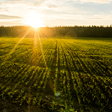
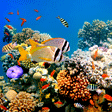
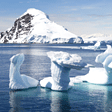
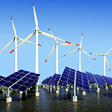

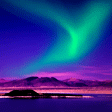

3 Comments
awesome report
Posted 02-04-2018 01:57
Hello Hajira!
This report really is well organised. It start with the definition, and its methods of detection. Then it covers the role that wetlands play in the environment, and the status quo of wetlands disappearing. Lastly it suggests ways to preserve wetlands from further destruction.
Nice report!!
Posted 22-03-2018 12:31
Hello Hajira, welcome your first monthly report :)
It makes me feel like I am reading a well-written sustainability and green governance essay!
You've managed to organize main elements and characteristics of wetland all up here.
And I did learn of world's largest wetlands as well! Thanks for letting us know of interesting facts
Keep up with your work!
Posted 21-03-2018 23:39